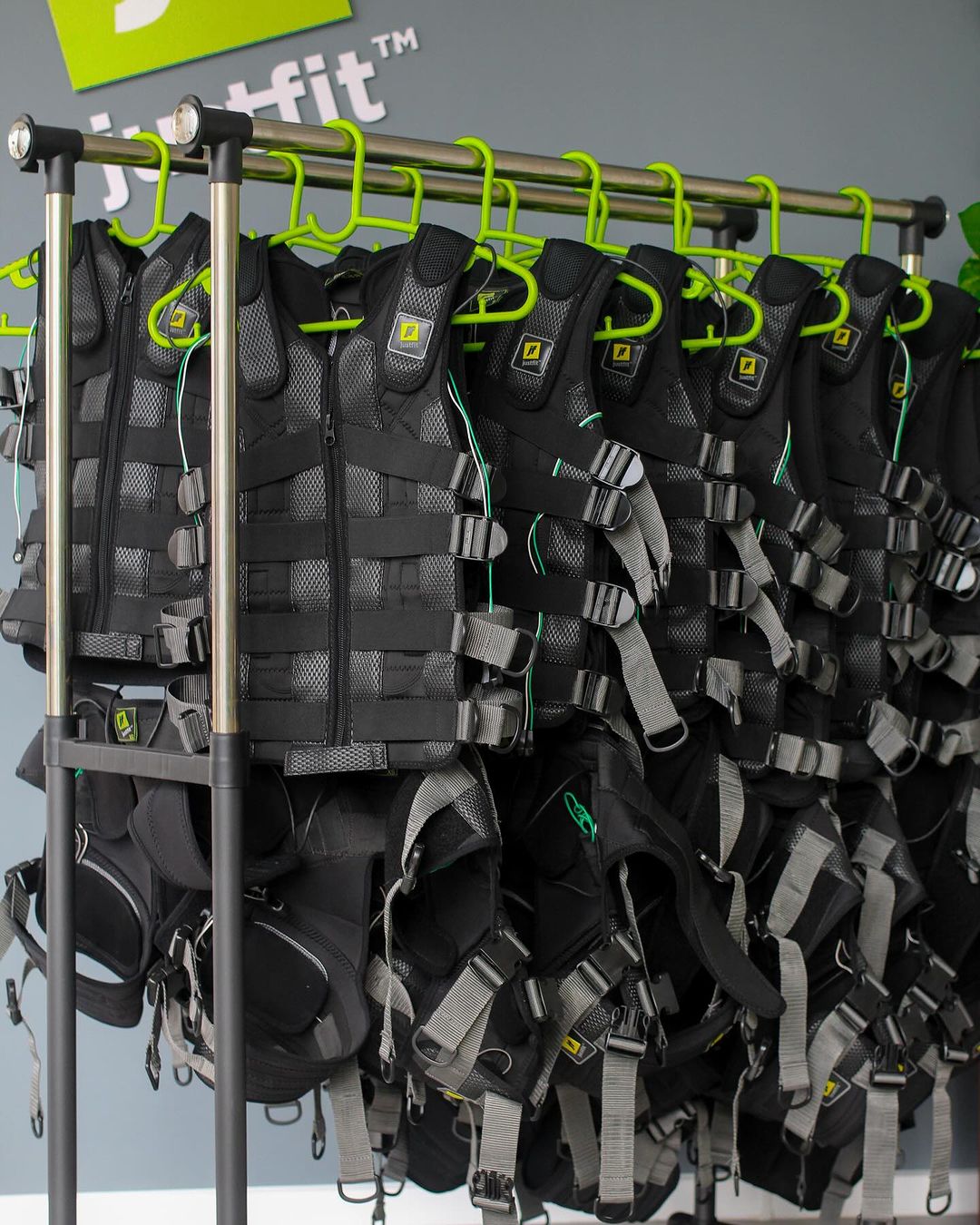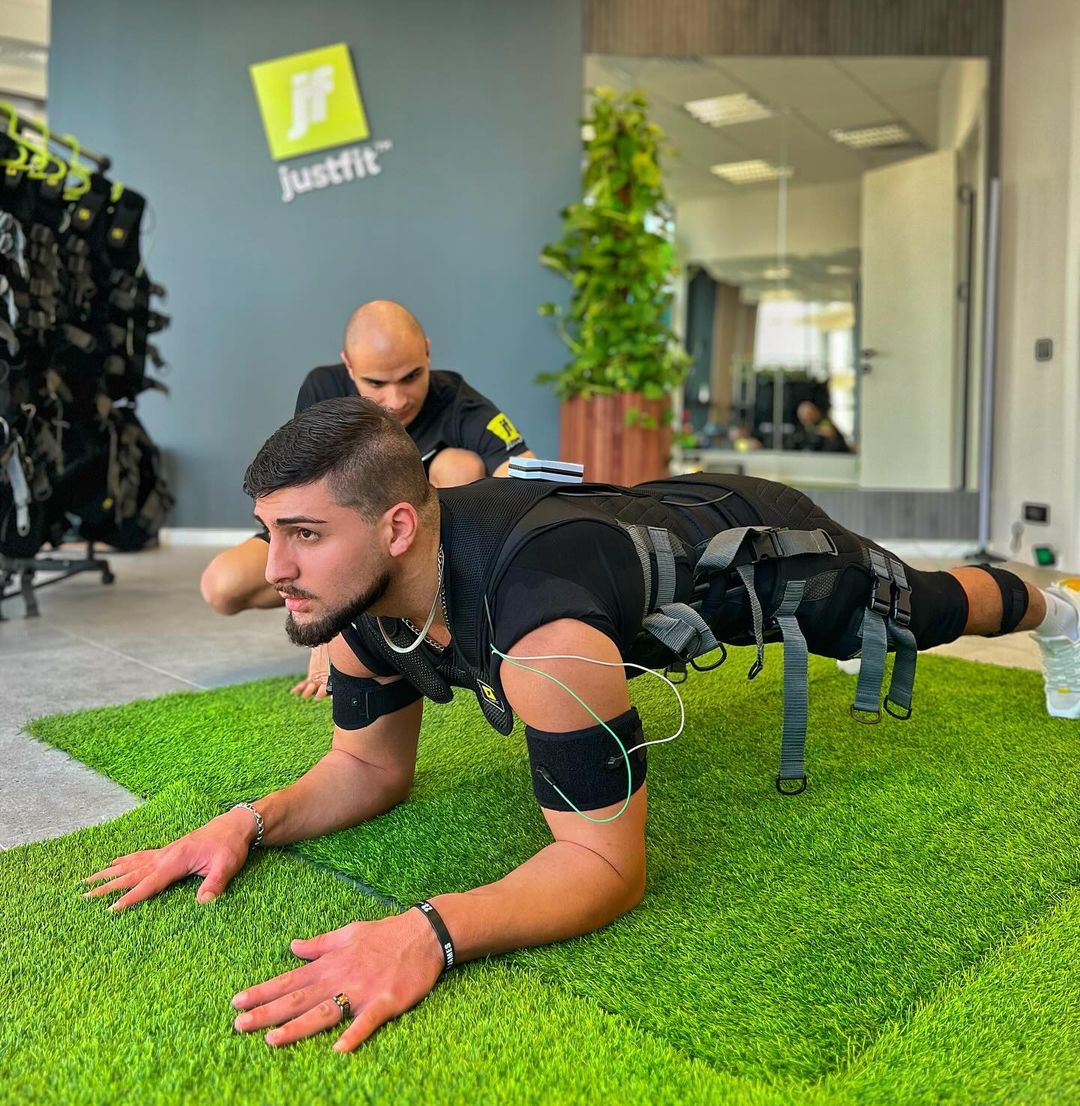Maintaining a fit and healthy lifestyle is a priority for many, but with so many training options available, choosing the most effective one can be challenging. Electric Muscle Stimulation (EMS) training offers a solution by maximizing muscle engagement, reducing injury risk, and delivering rapid results. In this article, I’ll guide you through the essentials of EMS training to help you make an informed decision about incorporating this innovative approach into your fitness regimen.
How EMS-Training Works
Electric Muscle Stimulation (EMS) training utilizes low-frequency electrical impulses to stimulate muscle contractions. Unlike conventional exercise, which relies on voluntary muscle contractions, EMS training targets both the superficial and deep muscle fibres simultaneously. This results in a highly efficient workout that engages up to 90% of muscle fibres, compared to just 30–40% in traditional strength training.
The process involves wearing a specialized suit equipped with electrodes placed on major muscle groups. During the session, these electrodes deliver controlled electrical impulses that cause the muscles to contract. This mimics the natural muscle contractions that occur during exercise but with greater intensity and efficiency. As a result, EMS training can enhance muscle strength, endurance, and overall performance with shorter workout durations.
EMS Devices and Equipment
EMS training relies on specialized equipment designed to deliver precise electrical impulses to your muscles. The key components include a control unit, electrodes, and a suit or belt equipped with conductive pads. The control unit allows for the customization of impulse intensity, frequency, and duration, tailored to individual fitness levels and goals. Proper fit and placement of the electrodes ensure optimal muscle activation and safety during the workout. It’s crucial to use high-quality, hygienic equipment to prevent skin irritation and ensure effective training sessions.
Discover our range of cutting-edge EMS devices here.
The Safety of EMS-Training
Safety is a primary concern in EMS training, and while it offers numerous benefits, it’s not suitable for everyone. Absolute contraindications include conditions such as recent surgeries, the presence of pacemakers, and pregnancy. Individuals with relative contraindications, such as cardiovascular conditions or chronic back pain, should consult with a healthcare professional before starting EMS training. A pre-training medical assessment is essential to ensure it’s safe to proceed, helping to tailor the program to your specific needs and health status.
Personal Training with EMS
One of the key advantages of EMS training is the involvement of a personal trainer who can tailor each session to your individual needs. Trainers ensure that the electrical impulses are set at the right intensity, provide guidance on exercise techniques, and monitor your progress. This personalized approach maximizes the benefits of EMS training while minimizing the risk of injury. A qualified trainer can adjust the workout based on your fitness goals, whether it’s for weight loss, muscle growth, or rehabilitation.
Cost of EMS-Training
EMS training sessions usually come with a higher price tag compared to conventional gym memberships. The costs may vary depending on the location, the trainer’s expertise, and the frequency of sessions. However, the value proposition is in the efficiency and effectiveness of the workouts. With EMS training, you can achieve significant results in a shorter amount of time, making it a worthwhile investment for those looking to optimize their fitness routine.
Frequency of EMS-Training
To prevent excessive strain and promote effective recovery, it is advisable to participate in EMS training sessions once or twice a week. It is important to space out each session by several days to allow the muscles to recover and adapt to the stimulation.
You should not have more than one session during the first eight to ten weeks of instruction, based on the most recent safety regulations and expert recommendations. We advise spacing out EMS sessions by at least four days following this acclimation period. This will prevent you from overtraining and give you enough time to recover and further adjust to the impulses.
Your present exercise level and general well-being should be taken into consideration when calculating the likelihood of an EMS recurrence. Additionally, it is a good idea to be very clear with both your trainer and yourself about whether you want EMS training to replace or supplement your usual fitness regimen.
EMS-Training at Home
EMS training, also known as electrical muscle stimulation training, is a form of physical training that involves the use of low-level electrical currents to stimulate the muscles. This type of training can be done at home using EMS devices that are designed for personal use.
The devices typically consist of electrodes that are placed on the skin over the targeted muscle groups, and they deliver electrical impulses to the muscles, causing them to contract. This form of training aids with muscle strengthening, toning, and recovery.
For those who prefer the convenience of training at home, EMS training can be adapted to fit this lifestyle. Portable EMS devices are available for purchase, allowing you to continue your workouts under the guidance of a remote personal trainer. When considering home EMS training, it’s important to invest in high-quality equipment and seek professional advice to ensure proper usage and safety.
Discover the benefits of EMS training with Justfit EMS. Enhance your workouts and achieve your fitness goals efficiently. Contact us to begin your journey today!
EMS Training as a Personal Trainer
Considering everything that has been discussed thus far, an EMS training session must be led by a qualified professional. There should not be more than two trainees for each trainer. Personal training is EMS training! You can not achieve your fitness objectives without the help of your trainer.
- Your trainer is constantly monitoring the electric current’s intensity.
- The workouts are guided and instructed by your trainer.
- Your trainer monitors correct execution and form.
- The training program is modified by your trainer to meet your unique objectives.
- You have your trainer by your side to motivate and inspire you.
- Your trainer helps you create an exercise regimen and arranges your appointments.
Although the training method is a high-tech approach to complete body exercise, the quality of your training will always depend on the instructor. A key component of what makes EMS training effective is the EMS trainer. So effective that more than 70% of EMS clients say they are at last realizing their objectives.
EMS training is becoming increasingly popular and is available in many fitness studios and specialized training centers. You can use location-finding tools online to identify studios and certified trainers near you. These facilities often offer trial sessions or introductory packages, allowing you to experience the benefits of EMS training firsthand.
EMS training provides a revolutionary approach to fitness, offering efficiency and effectiveness in achieving health goals. By understanding the fundamentals, safety protocols, and benefits, you can make an informed decision about integrating EMS into your fitness journey. Discover how Justfit products can help you reach your fitness objectives—contact us to get started today!





